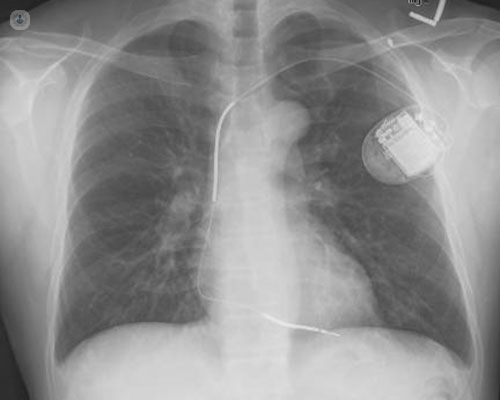

What is an implantable cardioverter defibrillator (ICD)?
An implantable cardioverter defibrillator (ICD) is a device used as a preventative treatment for people thought to be at risk of cardiac arrest due to ventricular arrhythmia. It is similar to a regular pacemaker, but it is implanted and linked to the heart.

What is it for?
An ICD can be used to treat ventricular arrhythmias, including ventricular fibrillation or sustained ventricular tachycardia (i.e. when your heartbeat is unstable or irregular which could lead to complications at some point in the future).
How does an ICD work?
This device can sense if the heart is beating at a potentially dangerous abnormal rate, delivering a high intensity electrical shock to the heart to disrupt the abnormal heartbeat, returning it to a normal beating rhythm.
How can I prepare for this procedure?
The procedure for implanting a cardioverter defibrillator lasts around 90 minutes. It is done under local anaesthetic and the device is implanted into the thoracic cavity, near the collarbone. Before the procedure, the doctor will programme the device with all the necessary information about you and your condition. During surgery, the heart is monitored with cardiac pacing leads that can send an electrical signal to the cardiac muscle in case of abnormal heart rate.
Post-operative care:
Recovery will take around two weeks and the stitches are removed after ten days. Furthermore, you will need to go for periodic check-ups to make sure that the device is working correctly. Should there be any anomalies, or irritation of the surgical site, or even an ICD malfunction, you will need to go to the nearest A&E or urgent care centre.
